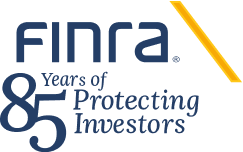Guidance
We offer guidance to firms in the form of podcasts, webinars, FAQs, reports, and more. Use the toggle below to find guidance by topic, type or date.
A
B
C
D
E
F
G
I
M
N
O
P
R
S
T
The Daily Total Summary Data and Detail Data Download files for the OATS Compliance Report Card provide underlying totals and detail of the data contained in the monthly summary OATS Compliance Report Card.
The tables below represent the data within the Daily Totals Summary Report Card and the Detail Data Download files.
Summary Definitions and Data Fields
|
Term |
Definition |
|---|
Background
Until mid-2017, FINRA maintained two distinct enforcement teams within the organization—one handling disciplinary actions related to trading-based matters found through our market surveillance and trading examination programs, and the other handling cases referred from other regulatory oversight divisions within FINRA, such as sales practice examinations and our Office of Fraud Detection and Market Intelligence. Through FINRA360, we analyzed stated firm concerns that these dual programs sometimes resulted in duplication of effort and inconsistency of results.
Regulatory Obligations
FINRA Rule 2090 (Know Your Customer) requires member firms and their associated persons to use reasonable diligence to determine the “essential facts” about every customer and “the authority of each person acting on behalf of such customer.” Regulatory Notice 11-02 (SEC Approves Consolidated FINRA Rules Governing Know-Your-Customer and Suitability Obligations) advised that firms verify the essential facts about a customer “at intervals reasonably cal
The Municipal Primary Offering Disclosure Report displays statistics about transactions your firm effected with customers during the securities’ Primary Offering Disclosure Period. This report is designed to aid firms in monitoring their compliance with Rule G-32(a) customer disclosure requirements, which apply to all broker-dealers selling offered municipal securities.
Background
Advanced data analytics is a critical function within FINRA and an important component of our efforts to be a risk-based and data-driven organization.7 This work, which supports our examination, surveillance and enforcement functions among others, is conducted in a number of areas throughout FINRA, but primarily within Market Regulation Surveillance, Research, Methodology, and Governance (SRMG), the Regulation Operations Advanced Analytics Team (AAT), the Office of the Chief Economist (OCE), and Technology.
Regulatory Obligations
Regulation SHO Rules 200 to 204 require firms to address risks relating to market manipulation, market liquidity and investor confidence by regulating excessive and “naked” short sales so that purchasers of securities from short sellers receive their securities positions in a timely manner. Regulation SHO requires firms to appropriately mark their securities orders; confirm that they have deliverable securities to complete short sale transactions; and have a process to close-out fails to deliver within the required timeframes.
The MSRB Due Diligence Report Card is a monthly status report to help firms monitor their issuances being brought to market in order to support firm's due diligence efforts. The report shows how many total issuances have been brought to market and which of those had issuers with previous issuances in the market that are lacking current audited financial filings (LCF) on EMMA. If any of the issuances being brought to market have a previously issued CUSIP LCF, then the current issuance is identified on this report card.
The report offers two alternative views:
1. How do I submit form filings to CRD?
Background
A critical part of the registration process in the securities industry is the background investigation of applicants for registration and the timely and accurate reporting of information to the Central Registration Depository (CRD) system via the Form U4 (Uniform Application for Securities Industry Registration or Transfer).
Timely and complete reporting of all information required by the FINRA By-Laws and rules, as well as the federal securities laws is critical. The Securities and Exchange Commission, FINRA, other self-regulatory organizations and state securities regulators use the information to make licensing and registration decisions, among other uses. FINRA also uses the information in BrokerCheck, which investors use for researching the professional backgrounds of firms and brokers.
Regulatory Obligations
Exchange Act Rule 15c3-1 (Net Capital Rule) requires firms to maintain net capital at specific levels to protect customers and creditors from monetary losses that can occur when firms fail.
Pagination
- Previous page
- Page 39
- Next page
